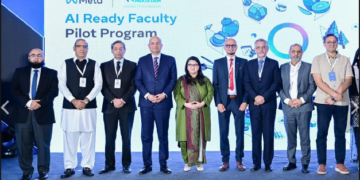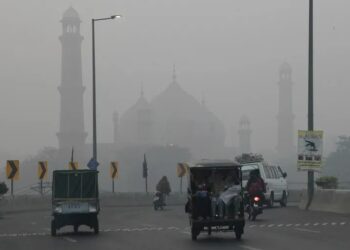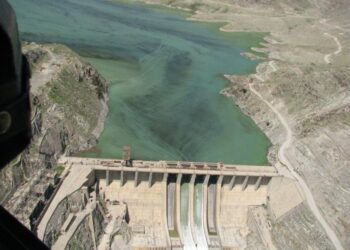Written by: Abdul Basit Alvi
Social media is often criticized for being a breeding ground for misinformation, rumors, and fake news. Unlike traditional media outlets, which generally follow journalistic standards, social media platforms allow anyone to publish content without verifying its accuracy. This has led to the rapid spread of false or misleading information, with serious consequences ranging from influencing elections to inciting violence. Misinformation about health topics, such as vaccines and medical treatments, has also become widespread, posing public health risks. Social media platforms have faced challenges in finding effective ways to address this issue, leaving much of the responsibility on users to critically assess the information they come across. Unfortunately, social media has also become a space where cyberbullying, harassment, and trolling thrive. The anonymity offered by the internet encourages some individuals to engage in hurtful or aggressive behavior without facing immediate repercussions. This has resulted in an increase in online abuse, particularly affecting younger users, who may be more vulnerable to emotional distress. Cyberbullying can have severe consequences for mental health, contributing to depression, anxiety, and, in extreme cases, suicide. Despite efforts by platforms to implement reporting systems and moderation tools, the issue remains prevalent. The widespread use of social media also raises significant privacy and security concerns. Users frequently share personal details, such as their location, photos, and even financial information, which can be exploited by malicious actors. Hackers, scammers, and identity thieves may use social media to gather sensitive data, putting individuals at risk. Additionally, social media companies collect vast amounts of user data, which is often used for targeted advertising or even sold to third-party companies. This practice has sparked concerns about surveillance, data breaches, and the erosion of privacy rights.
Social media algorithms are designed to show users content based on their interests and past behaviors. While this can make platforms more engaging, it can also create echo chambers—spaces where individuals are only exposed to viewpoints that align with their own beliefs. This leads to the formation of ideological bubbles and deepens political or cultural divides. As a result, social media can contribute to increased polarization and extremism, making individuals or groups more radicalized and less open to opposing viewpoints. This undermines constructive dialogue and can weaken the democratic process.
Social media platforms have also been used by various countries as tools for destabilizing their rivals. India has leveraged social media to destabilize Pakistan and spread misinformation about the country. This is part of a long history of anti-Pakistan actions by India. The insurgency in Balochistan, a region that has experienced significant unrest and violence in recent years, is often cited as an example. Reports suggest that India has provided training, funding, and logistical support to separatist groups in Balochistan, aiming to weaken Pakistan’s control over the province. These actions are seen as part of a broader Indian strategy to target Pakistan’s territorial integrity, particularly in regions like Balochistan and Gilgit-Baltistan, which India perceives as vulnerable points.
Covert operations and espionage are also significant aspects of India’s strategy to destabilize Pakistan. India has been accused of orchestrating intelligence operations to infiltrate and disrupt Pakistani institutions in an effort to weaken its government, military, and social cohesion. One of the most notable incidents involving Indian covert operations is the case of Kulbhushan Jadhav, an Indian national arrested by Pakistan in 2016 on charges of espionage and subversive activities. Jadhav, an officer in the Indian Navy, had been involved in running a network of sabotage and terrorism in Balochistan and other regions of Pakistan. This case became a major diplomatic issue between the two countries. In 2017, Pakistan sentenced Jadhav to death, but the sentence was suspended following international pressure, including intervention by the International Court of Justice (ICJ). Despite ongoing legal proceedings, the case highlighted India’s alleged use of covert operations to destabilize Pakistan, particularly by supporting separatist movements. Numerous reports suggest that India operates a network of intelligence operations within Pakistan, aimed at undermining its stability, including support for insurgencies in Kashmir and Balochistan, and sowing divisions within Pakistan’s political landscape. India’s intelligence agency, the Research and Analysis Wing (RAW), has been accused of supporting Pakistani dissidents and fueling sectarian violence. In addition to military and covert operations, India has also employed diplomatic and economic strategies to diminish Pakistan’s global position and destabilize its economy. India has frequently sought to isolate Pakistan on the global stage by emphasizing false human rights violations, supporting terrorism, and accusing Pakistan of harboring militant groups. India has actively lobbied against Pakistan at the United Nations and other international organizations, advocating for sanctions or punitive measures. For example, India’s involvement in the financial sanctions imposed on Pakistan by bodies like the Financial Action Task Force (FATF) is seen as part of a broader strategy to damage Pakistan’s economy and global reputation. India’s repeated false claims of Pakistan’s involvement in terrorism and its facilitation of militant groups help strengthen the narrative of Pakistan as a global security threat. India has also pushed for Pakistan’s inclusion in the FATF’s “Grey List” and “Black List,” significantly hindering Pakistan’s access to international financial systems. These actions contribute to Pakistan’s economic instability by limiting its ability to secure loans, investments, and trade partnerships.
India has been using water as a tool to destabilize Pakistan, particularly through manipulating the Indus Waters Treaty (IWT), a 1960 agreement governing the sharing of river waters between the two countries. The treaty allocates most of the Indus River system’s waters to Pakistan. In recent years, India has been accused of attempting to unilaterally alter or exploit the IWT by building dams on rivers that flow into Pakistan or raising the issue of water rights to exert control over Pakistan’s water resources. Water scarcity is a major concern for Pakistan, and India’s actions in this area have further escalated tensions. While India has not formally revoked the treaty, the growing number of water-related conflicts and infrastructure projects along the Indus River system continue to heighten concerns in Pakistan.
India has also engaged in actions that indirectly destabilize Pakistan by escalating regional tensions through military buildups and proxy conflicts. The Line of Control (LoC) between the two countries has long been a hotspot for military skirmishes, with frequent ceasefire violations. India’s regular military operations along the LoC and increased shelling in Kashmir have contributed to rising violence in the region. These actions destabilize not only Kashmir but also Pakistan’s overall security situation, leading to casualties and the displacement of civilians. In 2019, India conducted airstrikes in Balakot, Pakistan, following a suicide bombing in Pulwama. India’s expanding strategic alliances with global powers like Israel have also impacted Pakistan’s security. These partnerships provide India with advanced military technology, training, and resources, which could potentially be used against Pakistan. Additionally, these relationships enhance India’s geopolitical influence in the region, sometimes at Pakistan’s expense.
In the 21st century, warfare has shifted from traditional military confrontations to include a range of non-kinetic strategies designed to destabilize an adversary without engaging in conventional combat. This form of warfare, known as Fifth Generation Warfare (5GW), includes cyberattacks, disinformation campaigns, economic pressure, and other tactics aimed at weakening an opponent’s state apparatus, morale, and social cohesion. India has increasingly utilized elements of Fifth Generation Warfare (5GW) as a strategic tool to destabilize Pakistan. This warfare strategy takes advantage of the vulnerabilities in modern, interconnected societies, utilizing advanced technologies such as social media, cyber capabilities, and economic sanctions. Fifth Generation Warfare (5GW) is an unconventional form of warfare that focuses on non-traditional methods to undermine an opponent. In contrast to Fourth Generation Warfare (4GW), which centers on asymmetric warfare and insurgencies, 5GW seeks to disrupt the societal, political, and economic foundations of a nation. India’s use of Fifth Generation Warfare (5GW) against Pakistan primarily aims to destabilize Pakistan’s internal structures, weaken its political leadership, and impact its international relations. India employs both overt and covert methods to erode Pakistan’s resolve and global standing. A key component of India’s 5GW strategy is leveraging social media platforms to influence public opinion and stir unrest within Pakistan. In today’s hyper-connected world, social media has become a critical battleground for shaping narratives and spreading information quickly. India has allegedly been involved in spreading disinformation to disrupt Pakistan’s internal cohesion. During times of heightened tensions, such as after the 2019 Pulwama attack, platforms like Twitter, X, and WhatsApp were reportedly used to spread fake news, conspiracy theories, and malicious narratives aimed at damaging Pakistan’s global reputation. For instance, following the Pulwama attack, India’s social media efforts flooded the internet with videos, fake reports, and sensationalized stories portraying Pakistan as a state sponsor of terrorism. The goal was to influence international opinion and stoke anti-Pakistan sentiment both within India and worldwide.
India have used social media to incite sectarian violence and foster hatred within Pakistan. These tactics often target Pakistan’s diverse ethnic and religious communities, promoting divisive narratives that spark social unrest. During periods of heightened tension, inflammatory content is circulated to provoke communal violence between different groups in Pakistan, such as Sunnis and Shias or Baloch nationalists and the central government. Additionally, India has sought to create divisions between Pakistan and the people of Kashmir, where India has its own political interests. By spreading discontent, India aims to weaken Pakistan’s control over Kashmir and distract Pakistan from addressing its core security concerns.
In the digital age, cyber warfare has become an essential element of modern conflict. India has been involved in cyber operations against Pakistan, aiming to disrupt critical infrastructure, conduct espionage, and sabotage Pakistan’s economy. India’s cyber capabilities have been used to target Pakistan’s key infrastructure, including energy grids, telecommunications systems, and financial networks. There have been reports of India launching cyberattacks aimed at destabilizing Pakistan’s power supply or obtaining sensitive national security information. One notable incident occurred in 2019 when Indian cyber groups, allegedly with the backing of the Indian government, hacked several Pakistani government websites and databases. These attacks were intended to steal sensitive data, disrupt communications, and create a sense of insecurity among the Pakistani public.
Cyber espionage is another crucial aspect of India’s 5GW strategy. Indian intelligence agencies, particularly the Research and Analysis Wing (RAW), conduct extensive cyber surveillance on Pakistani officials, military personnel, and government databases. The aim is to gather classified information and monitor Pakistan’s military activities, especially regarding its nuclear capabilities and defense systems. Additionally, India’s involvement in proxy warfare remains a critical element of its 5GW approach against Pakistan. Rather than engaging in direct conflict, India is alleged to support insurgent groups, separatist movements, and terrorist organizations within Pakistan. This strategy seeks to destabilize Pakistan by fostering internal conflict and weakening the authority of its central government. India has been accused of backing terrorism movements in Pakistan, particularly in the volatile province of Balochistan. The region has long been plagued by insurgency movements, with Pakistan accusing India of supporting Baloch separatist groups seeking independence from the country. According to reports from Pakistani intelligence sources, Indian operatives, particularly from RAW, are believed to have played a role in training, funding, and equipping Baloch insurgents in an effort to destabilize the province. These actions have led Pakistan to accuse India of violating its sovereignty and conducting covert operations to create instability. Incidents like the 2016 Uri attack and the 2019 Pulwama bombing are examples where India falsely blamed Pakistan for supporting militant groups in Kashmir. Pakistan, however, denies these accusations and consistently condemns India’s alleged involvement in the Kashmir insurgency, stating that India’s military presence and policies are the main drivers of unrest in the region.
Economic warfare is also a key component of Fifth Generation Warfare (5GW), and India has been accused of using it to weaken Pakistan’s economy. India’s use of social media to fuel defiance against Pakistan and its institutions, including the Pakistan Army in Azad Kashmir, is a prominent topic in regional politics. Pakistan frequently exposes India’s use of hybrid warfare tactics, such as leveraging social media platforms to destabilize the region and undermine Pakistan’s sovereignty. The Indian Chronicles and EU Disinfo Lab serve as clear evidence that India has been employing indirect and hybrid warfare methods to destabilize Pakistan and its institutions, including targeting the sensitive region of Azad Jammu & Kashmir (AJ&K).
Past incidents show that India has struggled to implement successful direct strategies against Pakistan, leading to the development of a “phantom strike” strategy. This involves conducting coordinated social media campaigns to spread disinformation, sow division, and incite unrest among the people of AJ&K. One such phantom strike involved media manipulation, while another was the “Balakot” airstrike. Both incidents led to India’s humiliation as the truth on the ground exposed its lies, and the Balakot airstrike, dubbed “Operation Bunder,” quickly became a scandal. After failing to gain any significant advantage through direct attacks, India now focuses on this “phantom strategy,” which refers to covert operations designed to generate confusion and instability without direct attribution. India is reportedly using fake accounts, bots, and coordinated networks in AJ&K and abroad to manipulate public opinion and create a false narrative of dissent against the Pakistan Army and the state of AJ&K.
This strategy aims to recruit agents within AJ&K and among the diaspora who can foster doubt about the truth and support the Indian narrative when media campaigns are launched. The Pakistan Army remains the primary target of these well-coordinated and orchestrated campaigns. Recent events, such as the incidents in Mandol, Tetrinote, and Neelam village—where a snow-slide incident was portrayed as a sign of public defiance—highlight how India has used social media platforms and a small number of agents to create false narratives that undermine trust in the Pakistan Army and misrepresent its role in AJ&K, as well as its treatment of the local population.
Unfortunately, certain internal elements in both Pakistan and AJK align themselves with India’s agenda, as well as the agendas of our adversaries. One example of this is the behavior of the Awami Action Committee (AWC) in AJK. While India has banned the AWC in IIOJK, the organization is free to speak and protest in AJK. However, it appears that they are taking advantage of the state’s leniency and misusing this freedom. The AWC continues to make unjust and unfair calls for protests and has shown a lack of respect for the month of Ramazan. No protests have been organized by the AWC in AJK against the Indian atrocities or the recent ban on the AWC in IIOJK. Many perceive this as the AWC AJK showing a soft stance towards India, which is deeply unfortunate.
Following the recent terrorist attack on the Jaffar Express in Balochistan, anti-national social media accounts were reportedly involved in spreading misleading and false propaganda. The terrorists involved in the attack, which targeted innocent civilians—including women and children—were said to be in contact with their mastermind based abroad. In the wake of the attack, these social media accounts spread fake information, using artificial intelligence (AI) videos, old photos, fabricated WhatsApp messages, and posters to mislead the public. Indian media also played a role in perpetuating this misinformation, analyzing the situation through the lens of self-proclaimed fugitive Baloch leaders based outside Pakistan. Through its phantom strike strategy, India aims to exploit local grievances in Pakistan and Azad Jammu & Kashmir (AJK)—grievances that are even more pronounced in Indian-Occupied Jammu & Kashmir (IIOJK)—such as economic challenges and administrative issues. India seeks to amplify these issues via social media to create a false narrative of widespread discontent against Pakistan and the Pakistan Army. In Azad Jammu & Kashmir (AJK), the grand celebrations of events like Independence Day (14th August), Defense & Martyrs Day, Kashmir Black Day and Kashmir Solidarity Day reflect the strong, unbreakable bond of brotherhood, affection, mutual trust, and respect shared by Kashmiris and Pakistanis. These events are celebrated with great enthusiasm, showcasing the unity between the people. The people of Azad Kashmir genuinely wish for their fellow Kashmiris in Indian-Occupied Jammu & Kashmir (IIOJK) to experience freedom, independence, and prosperity. The current Chief Minister of IIOJK himself acknowledges, in an interview with BBC’s Stephen Sackur, that his powers are limited, while the Lieutenant Governor in IIOJK holds absolute powers, similar to a viceroy. The Kashmiri people are reigniting the Kashmir Freedom Movement, and the message from Pakistan’s Army Chief, which has gained traction across Jammu & Kashmir (with his posters even appearing in IIOJK), is a source of unease for India.
In fact, in the digital age, social media has become a central part of our lives, offering numerous benefits, from staying connected with loved ones to accessing news and entertainment. However, this increased connectivity also brings a serious downside: the spread of false propaganda and misinformation. Whether it’s fake news, conspiracy theories, or misleading content, misinformation on social media can have far-reaching consequences, including influencing elections or promoting harmful behaviors. To safeguard ourselves from being misled, it’s crucial to take a proactive approach to how we consume information.
Understanding misinformation and how it spreads is the first step in protecting ourselves. One of the simplest ways to avoid falling for misinformation is to verify the credibility of the source. Before believing or sharing any post, ask questions like: Who is the author or organization behind the content? Are they reputable or known for spreading false information? Does the platform hosting the content have a solid reputation for accuracy? Established news outlets and institutions often have fact-checking mechanisms in place. Is the post from a verified account? While not all unverified accounts spread false information, verification can be a good sign that the account is trustworthy. If the post lacks a credible source or the account regularly shares sensational or unverified content, approach it with skepticism.
It’s also important not to rely on a single social media post or account for information. Cross-checking facts from multiple reliable sources is essential in the digital age. Look for confirmation from well-established news sites, independent fact-checking organizations like Snopes, FactCheck.org, or PolitiFact, and experts in the field. If several trustworthy sources verify the information, it’s likely accurate. If the story only appears on one platform and cannot be verified by others, it’s a red flag that the information might be false.
Misinformation often aims to provoke strong emotions such as anger, fear, or outrage, since emotionally charged content is more likely to be shared and go viral. This is a common tactic used by those spreading false information. Before sharing emotionally charged content, pause and evaluate it. What emotions is the content trying to provoke? Is it exaggerated or sensationalized to elicit a reaction? Does the post appear too extreme or one-sided? Critical thinking is essential in these situations. If a piece of information is intended to provoke strong emotions, it could be an attempt to manipulate your opinion or behavior. The language used in the post can also provide hints about its credibility. Misinformation often relies on sensational or alarmist phrases like “shocking,” “breaking news,” or “this will change everything.” It may also make bold, sweeping claims without presenting reliable evidence. In contrast, credible news outlets typically maintain a neutral tone and are careful to qualify their statements. Phrases like “reports suggest” or “experts say” indicate that the information is based on evidence or expert opinion, rather than unsubstantiated claims. Sometimes, misinformation stems not from false facts but from misinterpretation or outdated information. A piece of content that was once true may resurface on social media but no longer be relevant. Before sharing a post, check the publication date to see if it’s from today or an old story being recycled. Also, consider whether the content still holds true in the current context or if it’s being taken out of context to mislead readers.
Several fact-checking tools are available to help you quickly verify the information you encounter on social media. Popular tools include Google Fact Check Explorer, which lets you search fact-checking articles on specific topics; FactualFinder, which helps assess the credibility of sources; and TinEye, a reverse image search tool that helps identify the origin of an image and check if it’s been altered. Using these tools can help you ensure the accuracy of the information before sharing or acting on it. Understanding how misinformation spreads can help you identify it more easily. Common tactics used to spread falsehoods include misleading titles or headlines designed to generate clicks but which often misrepresent the content, using seemingly authoritative voices to lend credibility to false information, and manipulating videos or audio recordings to make someone appear to say or do something they didn’t.
Social media algorithms often show content that aligns with your beliefs, reinforcing existing biases and making it easier for misinformation to spread in isolated groups. Being aware of these tactics can help you spot misleading content. Finally, one of the best ways to protect yourself and others from misinformation is to promote media literacy. This involves not just consuming information but critically engaging with it. Encourage others to question sources, recognize their biases, and understand how algorithms influence the content they see. Schools, workplaces, and community groups can all play a role in promoting media literacy, ensuring that people of all ages and backgrounds are equipped with the tools to navigate the complex digital information landscape.
If you encounter false or harmful content, take responsibility by reporting it on the platform. Social media networks typically have reporting mechanisms for flagging misinformation or harmful propaganda, and reporting it can help reduce its spread. Additionally, sharing correct information from reliable sources can help counter the false narrative. By actively fighting misinformation, you help others stay informed with the truth.
The ongoing propaganda and misinformation campaign, particularly from India, aimed at destabilizing and undermining Pakistan and AJK, requires prompt action from both the state and individuals. People strongly reject these malicious actions and urge the international community to hold India accountable, pressing it to cease interference in Pakistan and AJK and stop its heinous efforts to destabilize the region.

























